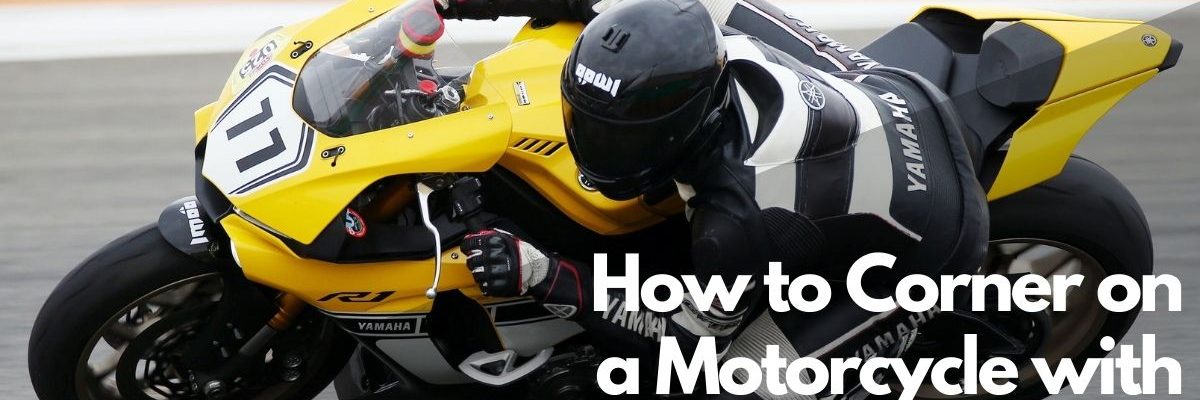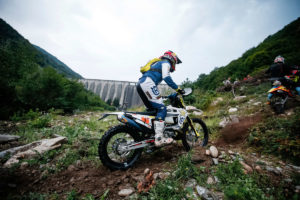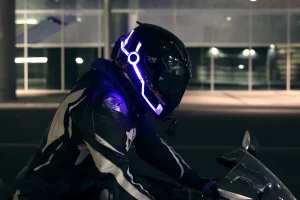Contents
- What is Cornering?
- How often do Racers use cornering?
- Principles of Cornering
- Body Positioning
- Vision
- Turning Techniques
- Counter Steering
- How much effort is required to steer?
- Picking your line
- Pay attention to the turning point
- Gas and Transmission Control
- Use of Throttle to Control the Speed
- The technique of Balancing the Weight
- Perfectly Cornering on a Track
- Key Points
What is Cornering?
Cornering means to push something toward a corner. Same as that, cornering on a motorcycle means to push a motorcycle towards a corner while riding to pass through the turn gently and quickly. It is a widely used technique in which you put force on one side of the handlebar and gently push it towards the corner.
One of the most exciting parts of riding a bike on the road is Cornering. It is considered a very good technique on the road if mastered, or it can become a cause of an accident if tried unprofessionally. Many professional riders use this technique on the race tracks.
How often do Racers use cornering?
Even the usual adventure riders use the cornering to take turns faster than usual. Therefore, if you have a motorcycle and want to go on adventures, you should know some basic techniques for riding a motorcycle on-road, such as cornering.
If you know how to ride a motorcycle fearlessly, you can also master cornering. As riding a motorcycle, your focus should always be on the road. That will promote your safety, and you can still have a lot of fun learning how to corner without any bug danger.
Principles of Cornering
There are some principles on how you can control your motorcycle for cornering, and some of the main points are:
- You should be in a less extreme situation on the road.
- You can move the body weight to the center of the bike and bend the side to the turn at the speed of 45mph.
- You should bend at 90 degrees as that is an ideal easy position for cornering, and it helps keep things simple.
- It would be best to try this on safe U-turns where you find no danger of sudden traffic.
You can perfect your cornering skills there without any fear. Once you perfect it, you can pass through a turn in no time. We have mentioned some simple tricks and tips that can help you understand the physics of motorcycle cornering.
Body Positioning
For better cornering, the rider must be leaning forward with bent and relaxed arms. If possible, the rider’s elbows should be in line and low with the handlebars. The rider must gently grip the lower body of his motorcycle with his legs for good balance and support.
Keep a grip on the handlebars as well slightly. However, don’t grab them too tightly, and also don’t put your weight towards the handlebar.
Vision
Your vision is very necessary, don’t drop it. Instead, keep your head up and tilt it a little bit toward the side you are willing to corner. Just keep your chin up to keep an eye on the road because you don’t want unnecessary traffic to get in your way.
If you are on track, all you need to focus on are the track lines that are very easily visible that can help you prepare for the turn you are about to take.
The outside of the turn or corner you will take is the area where you have to take the turn. To reach that area straight up, you need to adjust your speed and gears to get inside the area.
It would be best if you also examined the upcoming area of turn you are willing to take. It can be anything, a tree, a car, people walking by, or an upcoming truck that way.
Turning Techniques
The turn should be clear before you make it. You go where you look; that is the rule. If the road is clear, take that turn carefully by turning your head at that side to keep an eye on the road and ensure where you are headed next and where you want your bike to go.
When you are sure of the whole situation, this is the time for the turn. Now, this is the point where you have to apply pressure to the side turn of the motorcycle by transferring the pressure of your body to the one side where you want to turn.
By dipping your shoulder into the corner, push the side of the handlebar gently. To turn on that side, your gentle push on the footrest matters as well.
Finally, lean the upper body to that one side to get a smooth turn. You can take your time to figure out what kind of turn is good for you to make. Some are good at cornering a small turn, and some are good for cornering big turns.
This is a very easy technique that can make you feel more confident while riding. Always keep your eyes on the road and take that turn you want.
Counter Steering
There is no better source of motorcycle arguments than so-called opposition, forced steering, or active steering. The simplest point is that no matter what the coach calls it, the push technology on the inner plate makes the bike turn.
To turn right, you must carefully slide the right handlebar forward (to turn left, push left). This will tilt the motor to the right and allow you to take turns.
There is more control at higher speeds and sharp turns. However, you should pull the left handle back when turning right to make the motorcycle lean faster and further.
How much effort is required to steer?
There has been a big hole in the data collected by motorcycle data loggers for a long time, and the question was how much effort is required to steer?
After collecting all the data, the kit confirms that the faster you push and pull (counter-attack), the faster the bike leans (rolling speed in degrees/second).
After applying a steering torque of 108.6 Nm through the cross member, the suspension stroke of Foggy Esses from left to right reached 109.2 degrees per second.
Turning from right to left in the Kraner curve corresponds to a steering torque of 169.8 Nm, equivalent to lifting nearly 30 kg with one hand and pulling it out with the other. Thus, a race bike with smooth tires has a faster rider on the seat.
Picking your line
The simplest way to describe the importance of the route you choose is to find a turn or corner on a quiet and safe road. Do a few passes to speed up, and then watch as you make a turn.
After when you make perfect turns, the point in your method will come when you decide to start making a curve. Watch carefully where the spot is, and next time try to make a turn before that spot.
It is important not to drive too fast here because you’ll quickly notice that the earlier corner will distract you when you drive around a corner. If you make a corner fast, you will probably hit the oncoming traffic, but you can drive a little more to solve the problem if you work on it and practice more.
After that, you can try the opposite method: postpone your turns as much as possible. Then you will notice that it is not possible to run your bike wide. You may even notice that you collect more information about the corner every time you make a turn, so you take a safer and more controllable route than the natural method.
Pay attention to the turning point
Almost all those riders who entered the curve turned prematurely, they may feel tired, overwhelmed, or fall into group driving and try to keep up with faster drivers, but their real mistake is not paying enough attention to the turning point.
The problem is that when viewed from a certain angle, there is an underlying natural tendency to move to it, far from a wide line that provides good visibility and safety through that angle after you put in one or two things every second counts for braking and variable speed.
Keep questioning yourself that how far you will go? And the only answer to that is you can go as long as you feel comfortable. However, by locating the corners and setting a position early, you will have time to prepare.
The key point of the whole thing is that a wide stance has many benefits, but the most important thing is to improve vision and self-confidence.
Gas and Transmission Control
Try entering a corner with the throttle in neutral on the highway after scrubbing off speed in the braking point. This allows you to customize it more in a wider margin and is the safest method.
Look closely at the corners; you should know when to adjust the entry speed. Get in place as early as possible, and then adjust the speed. The braking should be done gradually and gently. All you have to do is to increase the pressure and then gently decrease it.
Use of Throttle to Control the Speed
It is important to stop all braking when driving straight. When you lean your bike into a curve, make sure you are not on the brakes. The ideal and main point of this level is to use the throttle to control the speed smoothly.
Evaluate your speed and shift into the correct gear-downshifts are great for overtaking and exiting corners. Downshift after braking is best when to go on a straight line because it’s smoother, so you can focus on the corners without switching the gear simultaneously.
One thing here to remember is that the riskiest thing you can do is accelerate around the corner, but you should have little positive gas. After shifting gears, you must be able to open up the throttle partially; it does not have to be enough to accelerate but enough to dodge the slowdown.
The technique of Balancing the Weight
Shifting the weight of the front wheel to the rear wheel increases the sense of control and keeps the bike steadier. However, be careful and do not overdo it, also remember never to bend around into a corner.
From the middle of the curve, you can speed up to the exit very carefully. There are two things to open the throttle: push away your motorcycle out of the curve on the expansion line; and make it stand up for you.
If the curve starts to push again, the bike will safely return to the compression phase if it rolls off again. When the corner is open, continued acceleration will pull the motorcycle out of the corner.
The key to this step is that the initial throttle rotation should be smooth, firm, and timed to get you on a good starting line.
Perfectly Cornering on a Track
No matter how fast you drive on the straight section, if you do not master the corners, you will never achieve your true driving potential on the track.
Participating in a day of hiking or riding are the ideal days to practice cornering, closer to the limitation of a bike, and much safer for you and your license than practicing on a traffic road.
Remember to hang off your motorcycle on a track and not on the road. Hanging the bike in the corner allows you to keep the bike in a more upright position, thereby reducing the tilt angle and tire pressure.
Key Points
Maintaining the right posture is the key. Unfortunately, many riders don’t stick to the bike too much, which can cause excessive tilt and dangerous slippage.
You should know where to place your body, brake, accelerate, and pinpoint the tip. Don’t be afraid to make many revolutions on the stage. Higher speeds help control and lower down the possibility of leaving the ground.
On the track, slide into the corner with the throttle closed and braking instead of accelerating. The greater the distance is, the safer the cornering will be.
Think of a path as a series of straight lines followed by a curve. Do your best to accelerate and brake on the straight tracks.






